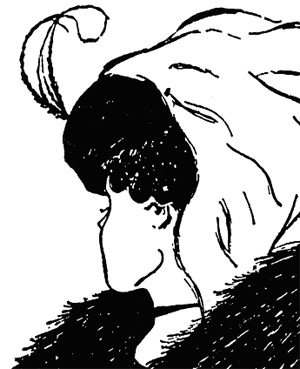
Since 2008, I have been ruminating on the idea of problems and opportunities. I have had many opportunities to speak publicly on this concept in addition to exploring it in my first book, The Shadows of Ants: How your biggest problem is your greatest opportunity. Overcoming the problems we face also requires an understanding of the problem. For example, identifying whether the problem you are facing is puzzle vs mystery.
Open Secrets

In an article titled Open Secrets published by The New Yorker, Jan 8, 2007, bestselling author Malcolm Gladwell, highlighted, national-security expert Gregory Treverton’s famous distinction between puzzles and mysteries.
“Osama bin Laden’s whereabouts are a puzzle. We can’t find him because we don’t have enough information. The key to the puzzle will probably come from someone close to bin Laden, and until we can find that source bin Laden will remain at large. The problem of what would happen in Iraq after the toppling of Saddam Hussein was, by contrast, a mystery. It wasn’t a question that had a simple, factual answer.”
Gladwell concludes that while puzzles require additional information, and grow simpler with each new piece of information, eventually becoming clearly solved, mysteries, are turbid: “Puzzles come to satisfying conclusions. Mysteries often don’t…. Mysteries require judgments and the assessment of uncertainty, and the hard part is not that we have too little information but that we have too much.”
The Fall of Enron
He remarkably cites the fall of ENRON as his main case, with supporting evidence from Watergate, arguing that Watergate was a classic puzzle, with a buried secret while the fall of Enron was a mystery. The prosecutor in the Enron case accused Enron of hiding the truth and the scape-goat was Jeffrey Skilling who the jurors were told to send to prison. But what truth had Enron hid? Everything Jonathan Weil, reporter at the Dallas bureau of the Wall Street Journal, learned and wrote in his September 2000 Enron exposé, came from Enron including numbers he verified in a face to face meeting with the company executive.
Enron used S.P.E.s (Special Purpose Entities) to raise capital without increasing its indebtedness, something commonplace in corporate America. However, Enron created a new twisted version of the game as Gladwell highlighted. It “didn’t sell parts of itself to an outside entity; it effectively sold parts of itself to itself—a strategy that was not only legally questionable but extraordinarily risky. It was Enron’s tangle of financial obligations to the S.P.E.s that ended up triggering the collapse.” Although everyone wants to blame Enron for a cover up you can’t because Enron disclosed everything. And that is exactly where the complexity of the situation lies.
For example, Enron had some three thousand S.P.E.s, with the paperwork for each about one thousand pages, for a total of around three million pages. …So a summary of Enron’s S.P.E.s would have come to a hundred and twenty thousand single-spaced pages. The bankruptcy examiner in the Enron case put together a summary of the summaries, and it still took up a thousand pages. The Powers Committee boiled down Enron’s accounting process into a summary of the summary of the summaries which was still a mind numbing two hundred unbelievably complex pages which Steven Schwarcz, a professor at Duke Law School, pointed out, was “with the benefit of hindsight and with the assistance of some of the finest legal talent in the nation.”
The reality of Enron’s situation became very clear through another lens as Gladwell observed. Victor Fleischer, a professor of law at the University of Colorado, pointed out a critical clue to Enron’s condition; “it paid no income tax in four of its last five years… Enron wasn’t paying any taxes because, in the eyes of the I.R.S., Enron wasn’t making any money.
More Knowledge or New Perspective?
Solving puzzles requires more knowledge, like finding the proverbial needle in a hay stack. Energy, passion, and persistence, the virtues of youth will pay dividends in solving the puzzles we face. Conversely, solving mysteries requires learning how to see what is already in front of you in a whole new way. In the image above there is an optical illusion that reveals both the face of an old woman and the face of a young woman. Wisdom, revelation, perspective, and unconventional ideas are required to solve the mysteries in our lives, and generally come only with maturity.
Photo Credit: Charles Hamm (Own work) [CC BY 3.0 (http://creativecommons.org/licenses/by/3.0)], via Wikimedia Commons
